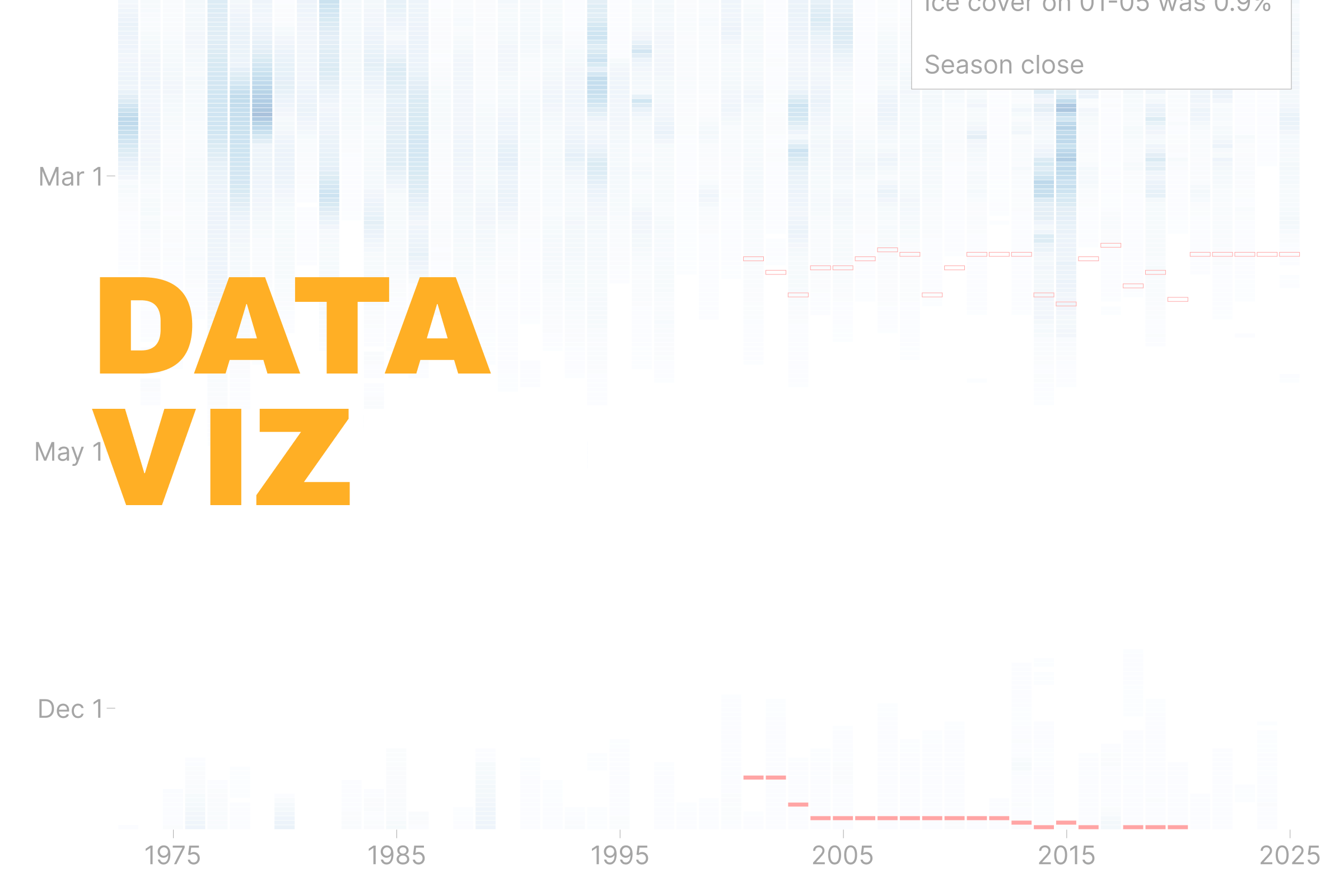Last week’s Data Vizdom showed how the Great Lakes navigation season lengthened between 2004 and 2024, gaining about 6.5 days on an average, or 8 hours per year. The 2024 season lasted 290 days, partly due to the declining ice cover on Lake Ontario.
Could the season be extended even further as winters grow milder and ice continues to decline?
The opening and closing dates of the Great Lakes–St. Lawrence Seaway are set by Canada’s St. Lawrence Seaway Management Corporation and the U.S. Great Lakes–St. Lawrence Seaway Development Corporation. Timing depends on weather conditions, navigational safety, and logistical coordination.
In the early years, the Montreal–Lake Ontario (MLO) section typically operated from April 1 to December 15. In the 1970s, U.S. studies proposed gradually extending the season from February 7 to January 7 for the MLO section with the help of icebreakers, lock upgrades, ice booms, and improved traffic control.
A 1978 Canadian study concluded the extension wasn’t economically justified, citing low demand and underused capacity. Water level management adds further challenges: ice jams can disrupt hydropower, and ice booms used to prevent them often halt navigation.
But as ice cover declines, many of these barriers have lost relevance. The interactive chart below shows daily maximum ice cover on Lake Ontario since 1973.
The chart shows that consistently cold winters have become less common since the 1990s, with ice cover staying below 15% on most days during warmer years. Since 2015, ice on Lake Ontario has often remained low, yet the navigation opening date (red-bordered cells) has not shifted earlier. Most of the season’s extension has come from later closing dates (solid red cells), leaving earlier potential days unused.
A more flexible schedule could unlock longer seasons. For Canada, this could be especially valuable. A longer navigable period may lower transport costs for bulk exports from ports like Hamilton and Toronto to international markets via the Atlantic.
As Canada looks to boost trade competitiveness amid ongoing U.S. tensions, the case for a longer season may be stronger now than it was in the 1980s. With milder winters, perhaps it is time to revisit how we manage one of the country’s key trade routes.
Data Vizdom digs into ideas big and small through visualizations that help make sense of a changing world, drawing on data from the SLGL dataHub.
